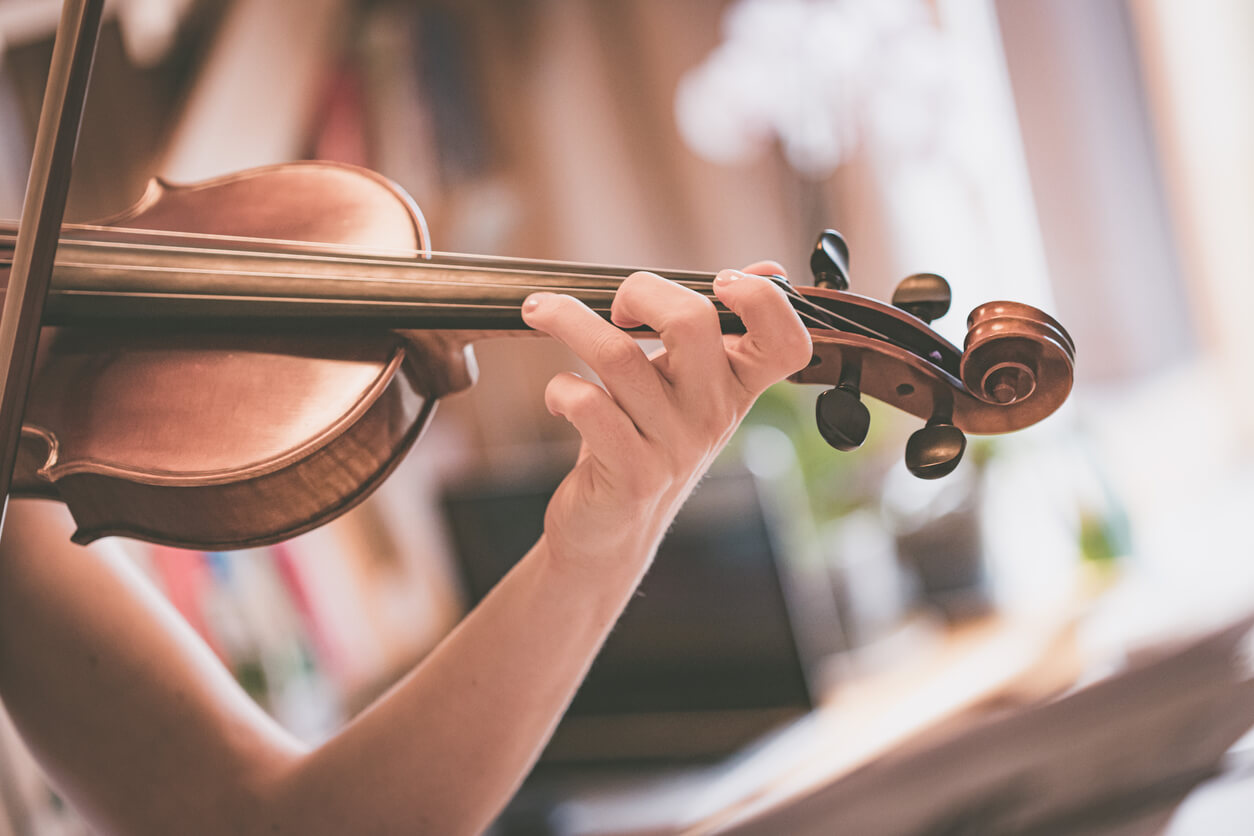Whether you sit or stand, playing the violin requires a lot of physical movement. Just like athletes need to warm up before a game, you need to warm up before a performance. While warm-ups are personal and no two violinists follow the same routine, we offer tips and ideas to help you build your perfect warm-up.
Why You Need to Warm Up
You might be eager to jump right into practice or a performance, but you shouldn’t skip warming up. Taking 10 to 30 minutes to warm up before you begin playing can help you:
- Reduce strain and risk of injury: Warming up is crucial for helping you physically prepare for a performance or practice session. It can loosen the muscles in your fingers, hands, back, and shoulders to reduce injuries or strains.
- Put yourself in the right mindset: A solid warm-up routine can help you mentally prepare. It allows you to transition from the outside world to the quiet focus needed for a performance. You can mentally connect with your instrument and music.
- Improve technical proficiency: Warming up allows you to focus on bow control, finger placement, and other technical fundamentals — without the pressure of performance. It can help improve your overall playing technique.
- Tune your violin: The last thing you want is to begin a performance with an out-of-tune violin. Your warm-up session gives you another opportunity to ensure your instrument is tuned.
- Enhance muscle memory: Have a difficult passage you’re worried about? You can use your warm-up to repetitively practice scales, arpeggios, or technical exercises to strengthen your muscle memory.
Violin Warm-Up Stretches
If you’ve traveled, especially in a cold car, you want to give your violin time to warm to room temperature. While your violin and bow adjust, take 5–10 minutes to do some stretches and hand exercises to loosen your muscles.
Finger Stretches
There are a few ways you can stretch out your fingers and hands. One popular method is placing your hand on a flat surface and lifting one finger at a time. You can also spread your fingers as wide as you can and hold for a few seconds before squeezing them into a fist. Repeat this a few times until you have good blood flow in your fingers.
Arm and Wrist Stretches
To loosen up your forearms and wrists, place one hand straight in front of you with the palm facing down. Use your other hand to gently pull your fingers (pointing up) to stretch the forearms. Then, rotate your arm so the palm faces up. Pull your fingers backward, thinking about pushing your palm out. Repeat on the other hand.
Shoulder and Neck Stretches
Tilt your head from side to side and up and down to help relieve tension. Keep your shoulders relaxed and away from your ears.
To work your shoulders, do some shoulder rolls and shrugs to get the muscles loosened and blood flowing.
Back Stretches
Stretching your back can help you maintain good posture while playing. Stand with your feet hip-width apart and lengthen your spine as you inhale. On exhale, hinge at your hips, keeping your spine and legs straight. Touch the floor or gently grab your elbows and hold the position for about 30 seconds before slowly rising.
You can also benefit from seated twists. Sit on the floor with your legs extended. Bend your right leg and place your foot outside your left knee. Twist your torso toward the right knee, placing your left arm outside the knee and putting your right hand on the ground for support. Hold for about 15 seconds before repeating on the other side.
Technical Violin Warm-Up Exercises
With your body warmed and ready to go, you can move on to musician warm-up exercises focusing on your instrument and bowing. Spend about 5 to 15 minutes going over violin-specific exercises.
Open Strings Bowing
Improve bow control and arm relaxation by practicing on the four open strings (G, D, A, E) without fingerboard contact. Use long, slow bow strokes and focus on keeping the bow parallel to the bridge.
Scales
Start with slow, deliberate practice of scales (including arpeggios, double-stops, etc.). Focus on intonation and smooth bow changes. As you get more comfortable and warmed up, gradually increase your speed and mix up the bowing patterns.
Etudes
Playing etudes (musical studies) can help you warm up technically and musically. Pick a handful of favorite etudes to return to, or choose ones that focus on your current challenges. You can also find exercises (like those from Schradieck or Sevcik) to use.
Practice and Performance Pieces
Incorporate the pieces you’re currently working on into your warm-up routine. Don’t use the whole piece, though. Instead, pull out short, familiar sections to apply your technical skills.
Best Violin Bows for Warming Up and Playing
Whether you’re learning, warming up, practicing, or performing, you need a reliable violin bow by your side. CodaBow is here to help. With our selection of carbon fiber violin bows, every practice and performance will surely be your best yet. Browse our bows online today.



Stay Connected